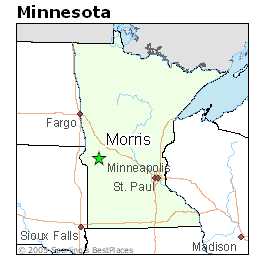 |
| (MPR image) |
I would guess that anyone who scratches the surface of this tantalizing topic starts to develop emotions. You can start waving the banner for authenticity, which is a tempting thing to do because it's so good for the collective self-esteem of West Central Minnesota residents, not to mention Scandinavians. Many do not fall into this camp though. People who feel the instinctive skepticism of academia often fall into the other camp: the naysayers.
The naysayers are influenced by the overwhelming circumstantial evidence against the stone's genuineness. So overwhelming it can make you want to laugh. And to be determined not to be done in by Scandinavians' notorious sense of humor. No one wants to be suckered by that. We'd be lucky if the biggest challenge of the famous stone was in trying to distance ourselves from that sense of humor.
The biggest problem, in fact, may lie in the fact that some people of strong academic leanings have joined the authenticity camp. The schism adds to the siren song element. Can't any consensus be found here?
Many years ago I wrote a newspaper article about one of these highbrow individuals, a linguistics specialist from Cornell (yes, "the" Cornell) no less, who was a personal friend of then-UMM administrator Bettina Blake. The Runestone became a compelling subject in my life for a time.
The siren song gained volume as I became convinced that the authenticity arguments outweighed the contrarians. And I felt that with time and further analysis, all the old ambiguity and snowball fights between the two camps, as it were, would recede and we could all celebrate the subject together.
Nope. I have become convinced that Alex's big rock falls into the category of "Fortean Phenomena." I learned this term back when I used our wonderful Morris Public Library for its books rather than its computer stations. I learned that the term refers to things or creatures whose existence seems almost certain, but that last baby stop toward certainty stays elusive as if through destiny. We were never meant to know, as with the Lake Champlain monster and such.
Gorillas were once thought to be the product of an overactive imagination until their existence was confirmed. As for the Runestone, it seems to be a 400-pound gorilla of frustrating mystery.
I did a check and found that I had discarded the 2-3 books on the Runestone I once owned, probably donating them for the library's summer sale. Evidently I didn't want that siren song pulling at me anymore. The believers go to such great lengths talking about how characters in the stone could not have been generated with the existing knowledge of Runes at the time (at least out here). But how much certainty do we have about that "existing knowledge?"
The skeptics, including luminaries at the Minnesota Historical Society, don't want any new "documentation" offered up. Their eyes get glazed over and their comments become reflexively dismissive, driving those in the other camp virtually nuts. No wonder I want to let go of this subject.
Why am I writing about it now? Because tonight (Monday) I am attending a club meeting where the featured speaker has written with great conviction about the stone's genuineness. What club is this? Is it a group that can be counted on to weight the evidence objectively? Dispassionately? It's the Sons of Norway. Rats.
Growing up, I was exposed to a lot of the pro-Runestone spin, because for several years the only TV channel our neighborhood could (reliably) get was KCMT-Alexandria. I learned that the Alexandria area had come to tie its image to the intrepid pre-Columbus travels of the barbarian-like Vikings.
Various things were named accordingly (e.g. Our Lady of the Runestone Church), and one came to realize that Alexandria had a vested interest in trying to convince the world that real Vikings, not those prancing on a football field, settled in our area.
In high school I was a "ringer" on various nights with the Kensington High School pep band (under the baton of the late Walt Sarlette) and the mascot for this team was a classic Viking. They chose an obese boy whose temperament actually struck me as quite passive. And the school's sports nickname? Yes, the "Vikings."
Of course, Kensington High School is no more, as the population drain in the Great Plains has forced dramatic consolidation. Schools have gone through several rounds of retrenchments. Today there is a West Central Area School - doesn't say much about where it's located - and I believe the vestiges of Kensington are in there. But no more "Vikings." Gone with the wind.
It's hard to let go of the Runestone and its hoped-for place in the pantheon of true history, in light of how iconic images in West Central Minnesota are tied to it.
An admission of fraud could never be swallowed, at least not all at once. That scenario would remind me of the joke that was popular when Alex Haley's "Roots" and the miniseries it spawned were all the rage?
"Did you hear about Alex Haley? He just found out he was adopted!"
-Brian Williams - Morris Minnesota - bwilly73@yahoo.com






















No comments:
Post a Comment